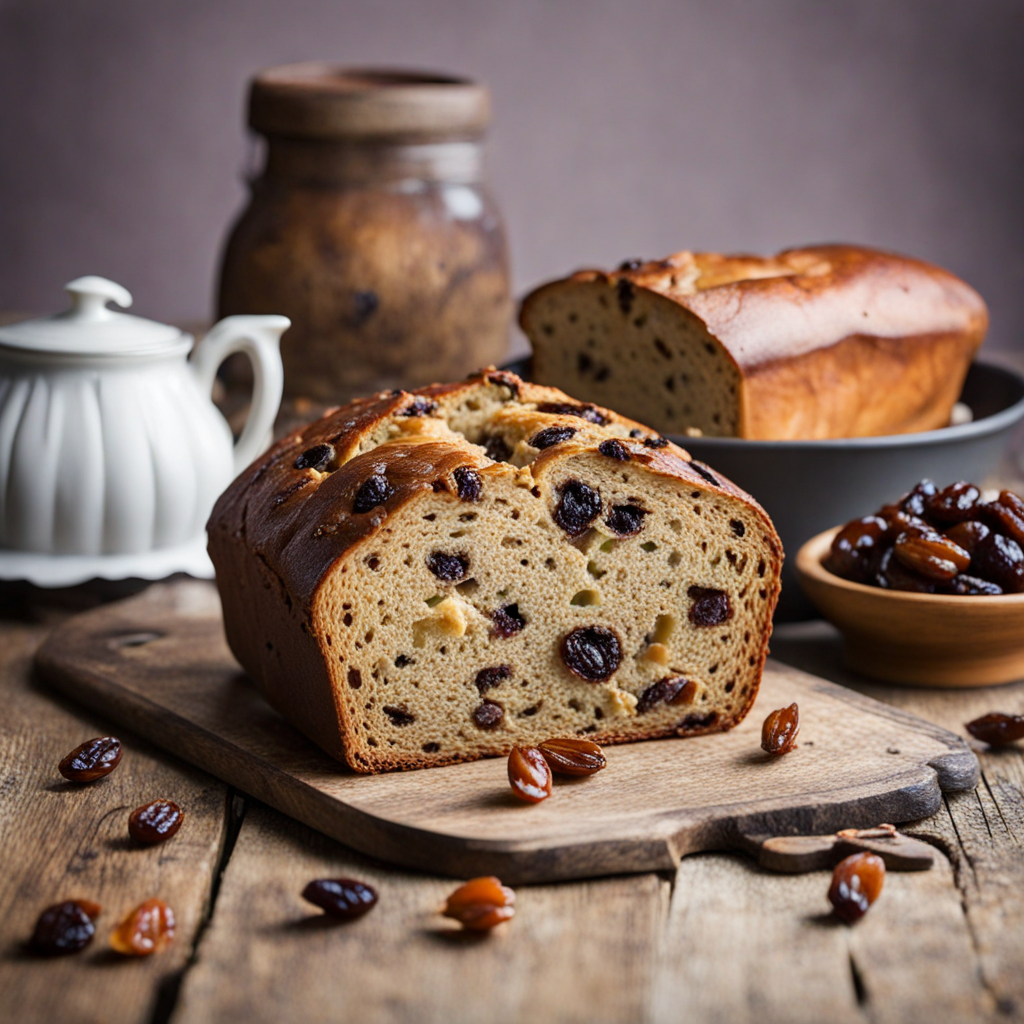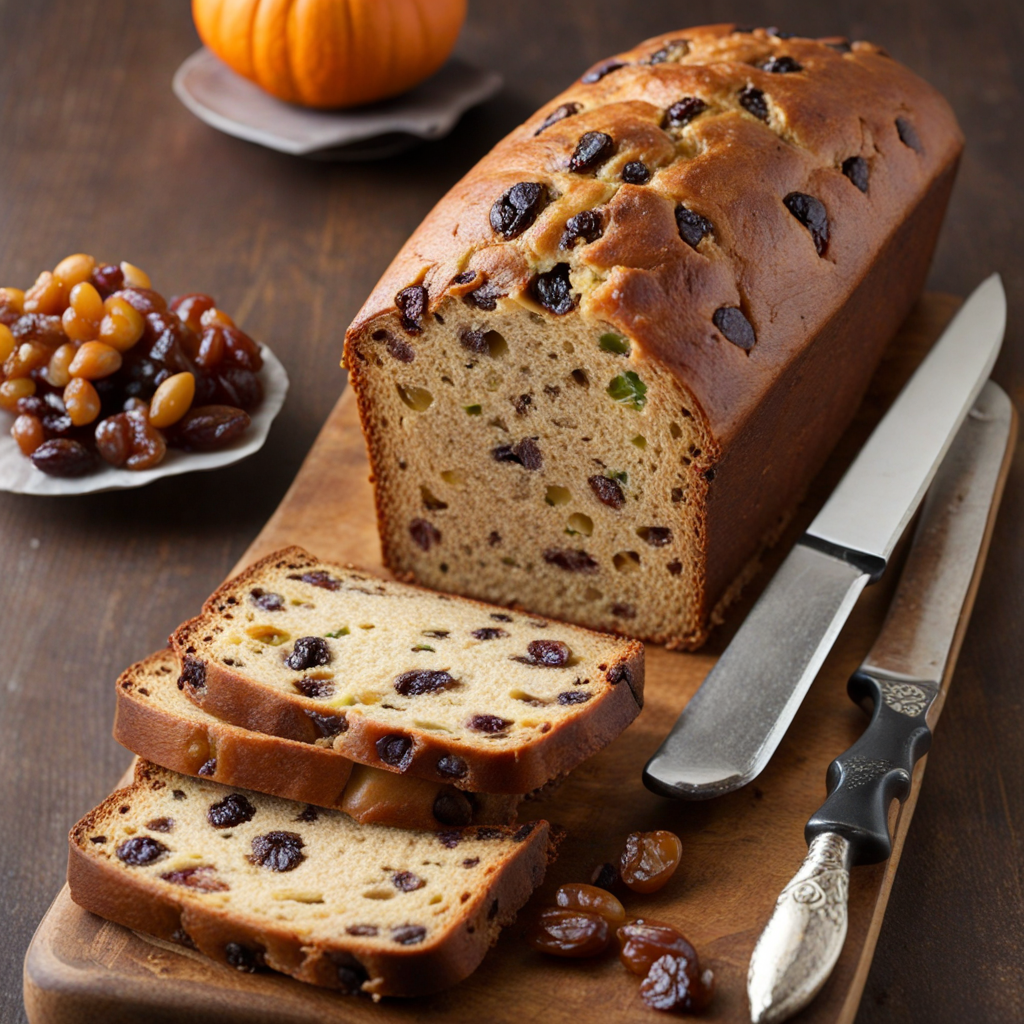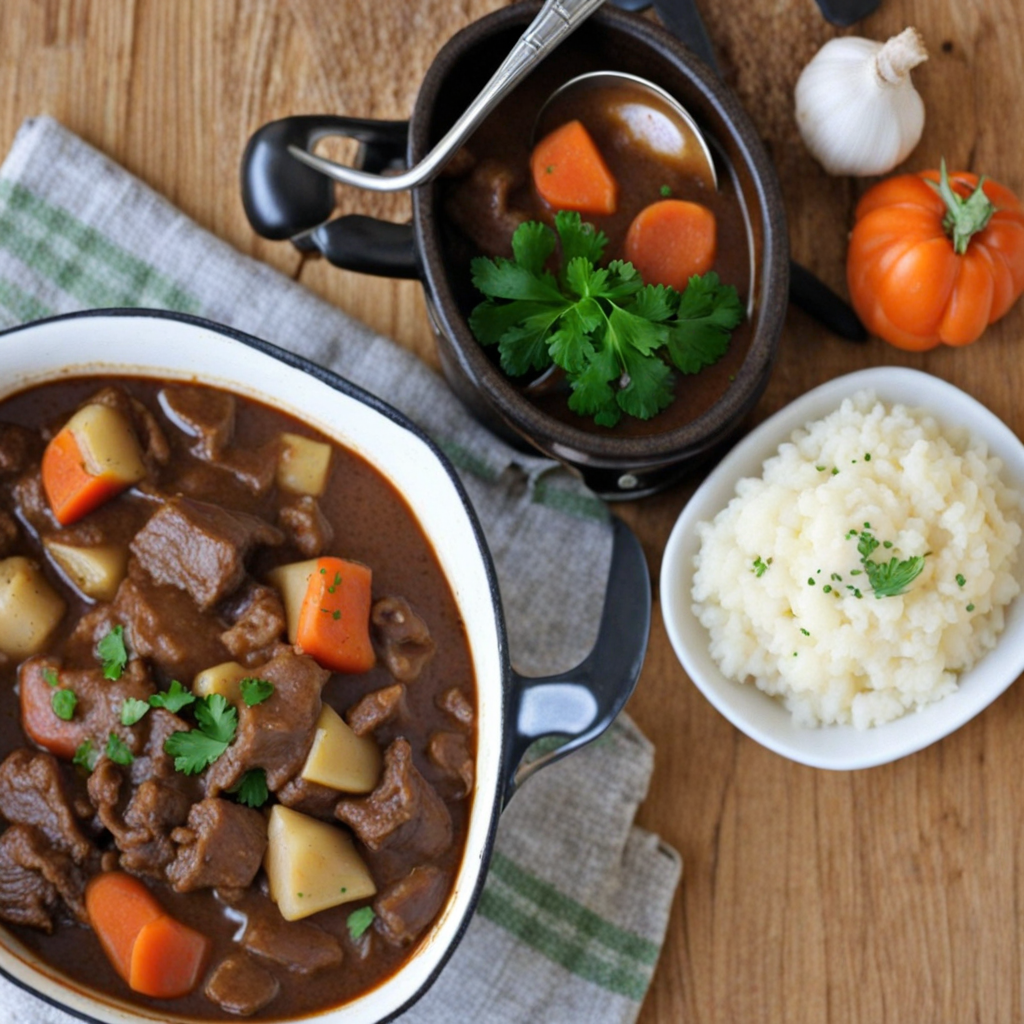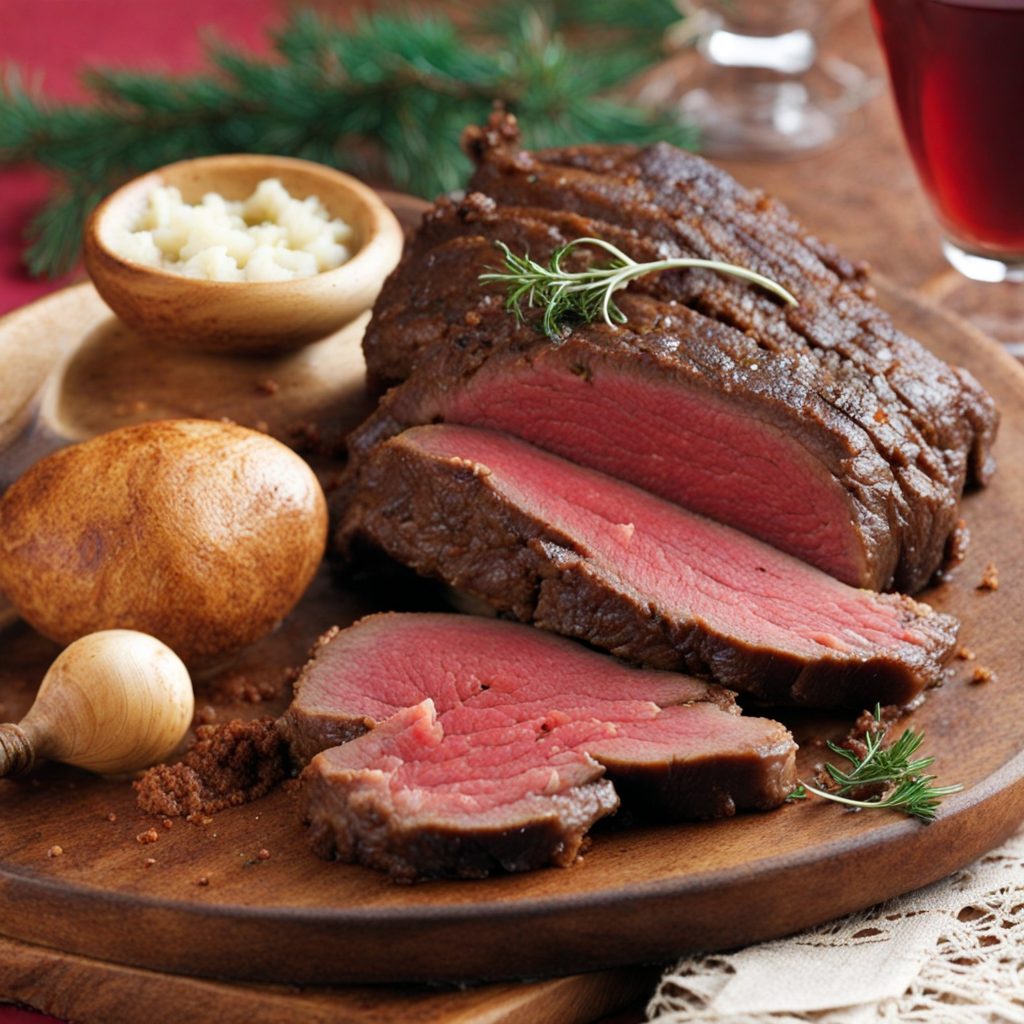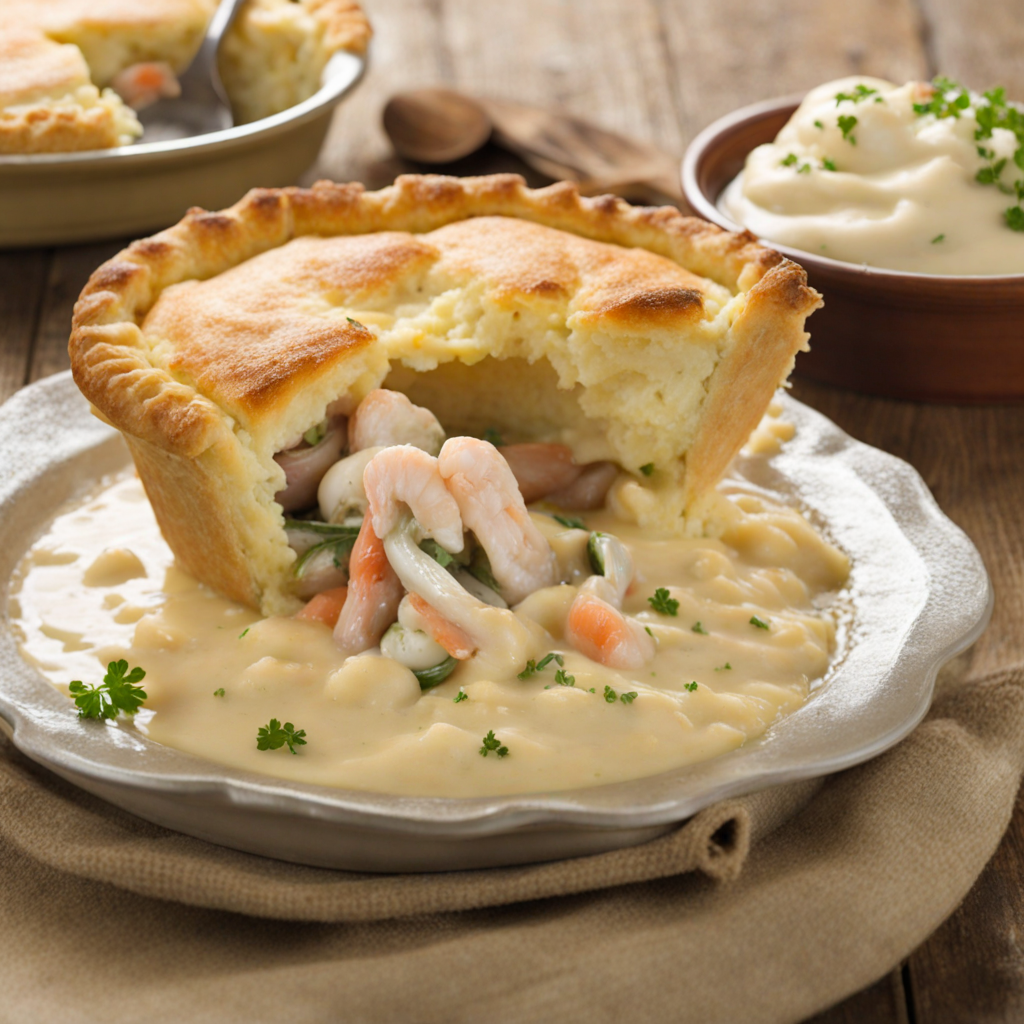Barmbrack
Barmbrack, a traditional Irish sweet bread, is a delightful treat that embodies the rich culinary heritage of Ireland. This dense, moist loaf is made with a combination of flour, sugar, yeast, and a generous portion of dried fruits, including sultanas, raisins, and currants. The fruits are often soaked in tea or whiskey prior to being folded into the dough, which infuses the bread with a subtle depth of flavor. The texture is soft and slightly chewy, making it a perfect accompaniment to a warm cup of tea or coffee. One of the most enchanting aspects of Barmbrack lies in its connection to Irish folklore and tradition. Traditionally, it was baked during the Halloween season and often contained hidden charms, each symbolizing different fortunes for the coming year. For example, a ring symbolized future marriage, while a coin indicated wealth. This playful element of surprise adds an exciting twist to the experience of enjoying Barmbrack, as each slice can reveal a delightful secret, making it not just a treat but a shared experience steeped in cultural significance. The flavor profile of Barmbrack is subtly spiced, often enhanced by the addition of warm spices like cinnamon and nutmeg. The sweetness from the dried fruits complements the bread's rich, buttery notes, creating a satisfying balance. Some variations even include a hint of citrus zest, which brightens the overall taste. Whether enjoyed plain, slathered with butter, or toasted to golden perfection, Barmbrack offers a unique taste of Irish tradition that is both comforting and festive, inviting anyone to savor its warm, inviting flavors.
How It Became This Dish
Origin of Bairín Breac Bairín Breac, often referred to as "Barmbrack" in English, is a traditional Irish bread that holds a special place in the hearts and homes of many Irish families. Its name translates to "speckled bread," which aptly describes the fruit-laden loaf that is a staple during the autumn months, particularly around the time of the festival of Samhain, which later evolved into Halloween. The bread's origins can be traced back to ancient Ireland, where its sweet, enriched bread batter likely drew inspiration from similar breads found in other European cultures. The earliest forms of Bairín Breac were simple, utilitarian breads made from basic ingredients such as flour, water, and yeast. Over time, as trade routes expanded and Irish society evolved, dried fruits such as raisins and sultanas began to be incorporated into the dough, giving the bread its distinctive speckled appearance. The addition of spices, such as cinnamon and nutmeg, further transformed the loaf into a seasonal treat, marking the transition from summer to winter. By the 19th century, Bairín Breac had firmly established itself as a popular dish, especially during the harvest season when fruit was plentiful. \n\n Cultural Significance Bairín Breac is not merely a delightful culinary creation; it is steeped in cultural significance and is a symbol of celebration and connection to the past. Traditionally, it was baked during Samhain, a time when the veil between the living and the dead was believed to be thinnest. Families would bake the bread to honor their ancestors and invite good fortune into their homes for the coming year. The practice of hiding various objects within the bread, such as a coin, a ring, and a thimble, added an element of fortune-telling. Each item was said to predict different aspects of the future: the coin signified wealth, the ring foretold of marriage, and the thimble indicated a life of hardship. As Irish culture evolved, Bairín Breac became an integral part of Halloween celebrations. The bread is often served with butter and enjoyed with tea, symbolizing warmth and togetherness during the darker months of the year. It is a dish that brings families together, with the act of baking becoming a cherished ritual that ties generations together. Today, the bread continues to be enjoyed not just in Ireland but among the Irish diaspora worldwide, serving as a reminder of home and tradition. \n\n Development Over Time The 20th century saw significant changes in the preparation and consumption of Bairín Breac. With the advent of modern baking techniques and mass production, pre-packaged versions of the bread became widely available. While these commercial products made Bairín Breac more accessible, they often lacked the rich flavors and textures of traditional homemade varieties. This shift sparked a renewed interest in artisanal baking, prompting many to return to the traditional recipes passed down through generations. Bakers began experimenting with the ingredients, incorporating local and seasonal fruits, and even adding a splash of whiskey or tea to enhance the flavor profile. The artisanal movement also saw the rise of gluten-free and vegan versions of Bairín Breac, catering to dietary preferences and restrictions while keeping the spirit of the bread alive. This evolution reflects a broader trend in the culinary world, where traditional recipes are being adapted to suit contemporary tastes and lifestyles, all while preserving their cultural significance. \n\n Modern-Day Celebrations In contemporary Ireland, Bairín Breac is celebrated not only during Halloween but also throughout the year, particularly during festive occasions and family gatherings. Bakeries and households alike take pride in their unique recipes, often competing for the title of the best Bairín Breac in their communities. Annual competitions and festivals celebrate this beloved bread, showcasing the diversity of recipes and techniques used by bakers from different regions. Moreover, Bairín Breac has found its way into modern culinary practices beyond traditional settings. Chefs and food enthusiasts have begun incorporating the bread into a variety of dishes, from bread puddings to trifle, further highlighting its versatility. Social media has also played a significant role in reviving interest in Bairín Breac, with countless posts sharing images of beautifully baked loaves and creative adaptations, turning it into a cultural phenomenon that resonates with younger generations. \n\n Conclusion: A Bread of Tradition and Innovation Bairín Breac stands as a testament to the rich tapestry of Irish culinary history. It encapsulates the essence of community, tradition, and the changing landscape of food culture. From its humble beginnings as a simple bread to its role as a harbinger of fortune and a symbol of celebration, Bairín Breac continues to evolve while remaining deeply rooted in Irish culture. As families gather to bake and share this beloved bread, they not only honor their ancestors but also create new memories that will be cherished for generations to come. The bread serves as a delicious reminder of the importance of heritage, connection, and the simple joys of sharing a meal together.
You may like
Discover local flavors from Ireland


